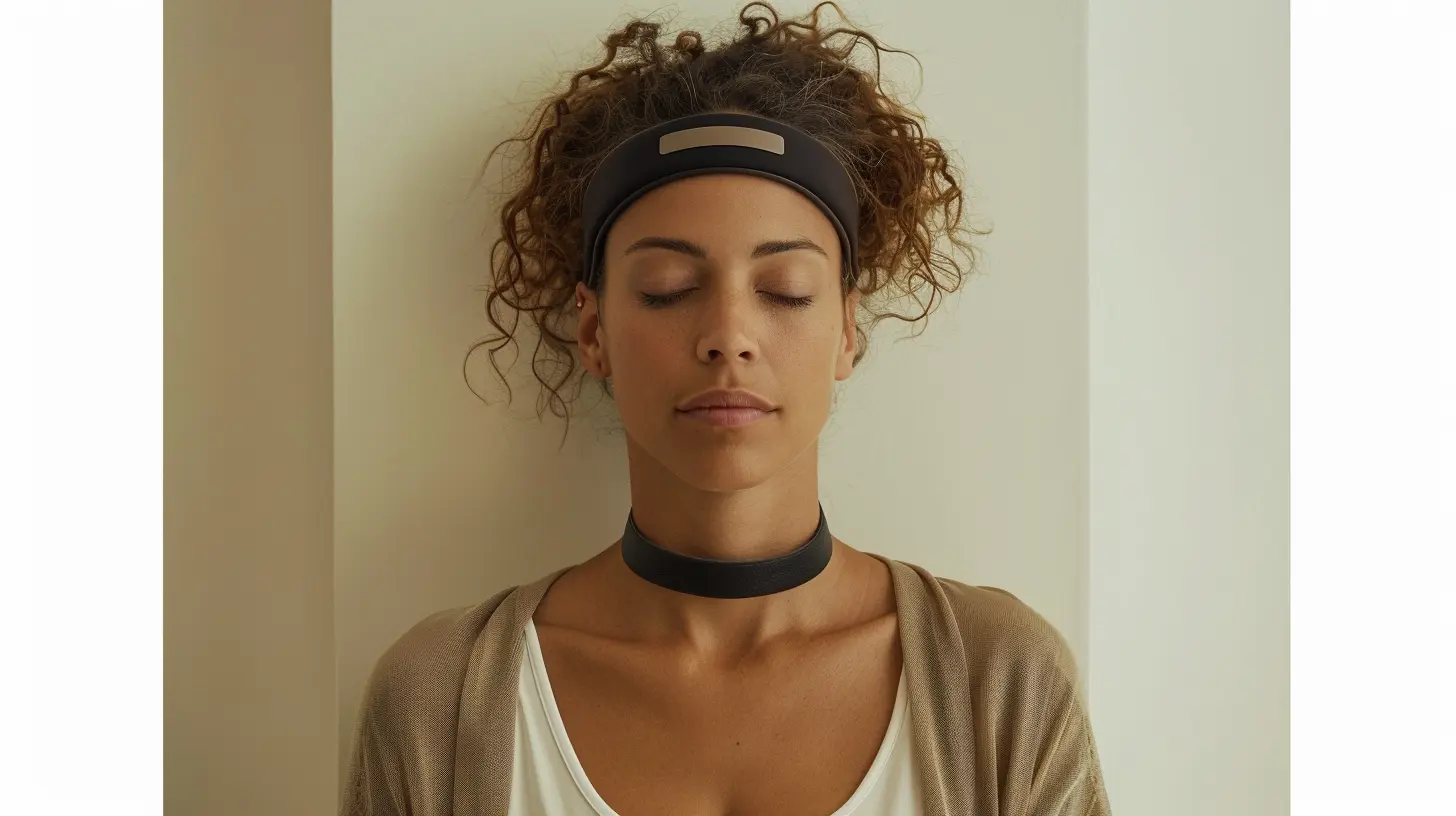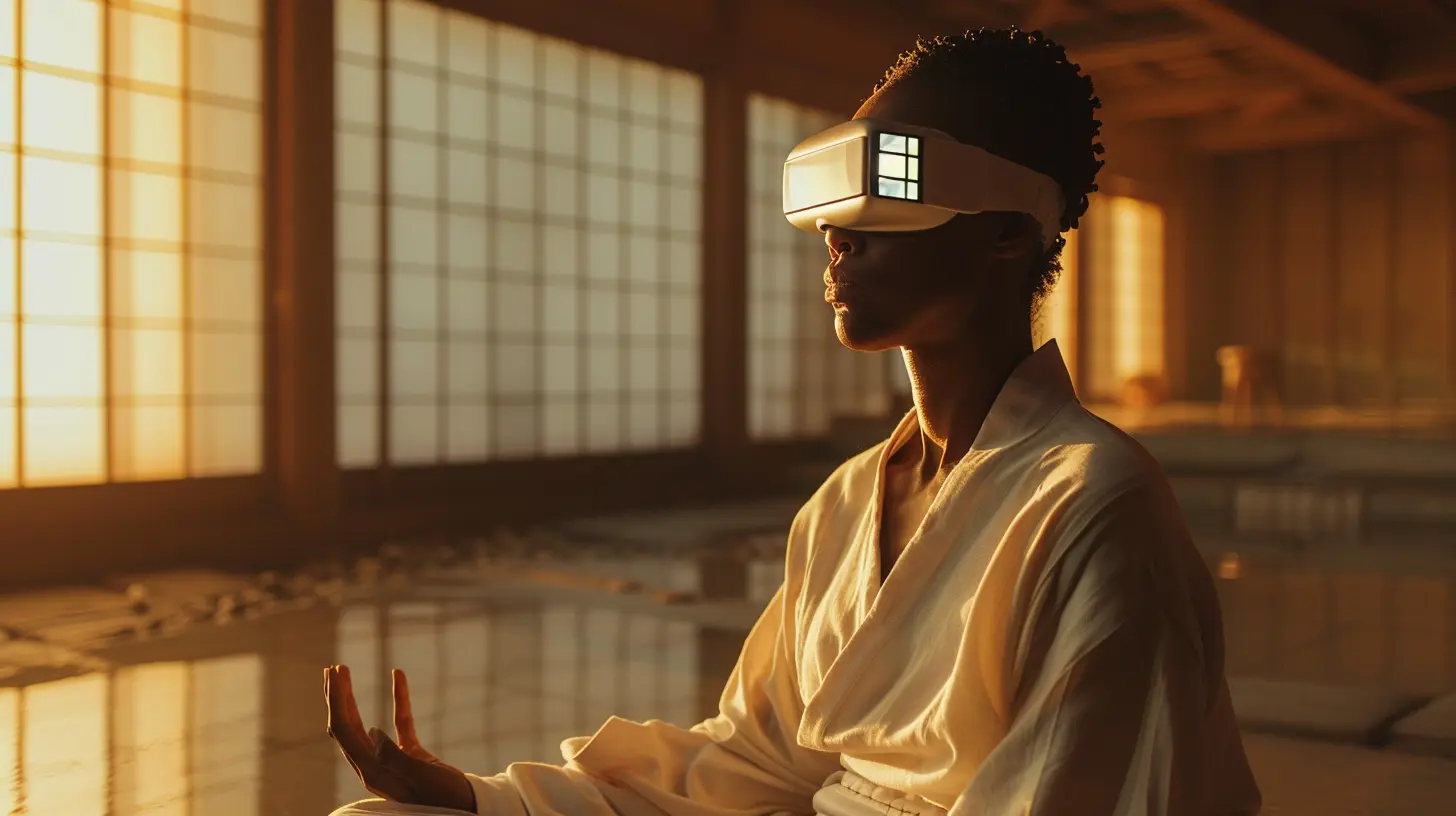Wearable Devices for Mindfulness: Enhancing Meditation with Technology
1 July 2025
In today's fast-paced world, finding a moment of peace can feel like searching for a needle in a haystack. We're constantly bombarded with information, notifications, and distractions. It’s no wonder so many of us are turning to mindfulness and meditation as ways to slow down, breathe, and take a mental pause from the hustle and bustle of life. But here’s the kicker: technology, which is often blamed for our stress, is now stepping up to help. In comes wearable devices for mindfulness—gadgets that promise to enhance your meditation practice and take your zen game to a whole new level.
Sounds like something out of a sci-fi movie, right? Well, it’s not. These wearable devices are here, and they’re making mindfulness more accessible, trackable, and effective than ever before. Let’s dive into how these tech wonders are transforming mindfulness and meditation.

What Are Wearable Devices for Mindfulness?
First things first—what exactly are we talking about when we say "wearable devices for mindfulness"?Wearable devices for mindfulness are gadgets designed to help you practice meditation or mindfulness exercises more effectively. They come in different shapes and sizes, from headbands to wristbands, smartwatches, and even rings. These devices are packed with sensors that monitor various physiological signals like heart rate, breathing patterns, brainwaves, and even muscle tension. They then use all that juicy data to give you real-time feedback on your mental and physical state.
And the best part? Many of these devices come paired with apps that guide you through mindfulness exercises, meditation techniques, or even breathing exercises. It’s like having a personal meditation coach on your wrist or forehead.

Why Meditation and Technology Make a Great Pair
Now, some of you might be thinking, “Wait, isn’t meditation supposed to be about disconnecting from technology?” And yeah, I get it. Meditation has traditionally been about going inward, focusing on your breath, and letting go of external distractions. So, where does tech fit into that equation?Well, that's the beauty of it. Meditation and mindfulness are hard to master. For beginners, sitting still and clearing your mind for even five minutes can feel like running a marathon. Your thoughts wander, your body gets restless, and before you know it, you’re thinking about what to make for dinner instead of focusing on your breathing. Wearable devices for mindfulness help bridge that gap by offering real-time feedback that keeps you on track. They guide you back to the present moment when your mind drifts and give you data to track your progress.
Think of it like using a GPS to navigate a new city. Sure, you can try to find your way without it, but wouldn’t it be easier with a little help? That’s exactly what these gadgets offer—a roadmap to mindfulness.

Types of Mindfulness Wearables
Alright, let’s talk specifics. What are some of the types of mindfulness wearables you can get your hands on? Here’s a breakdown:1. Brain-Sensing Headbands
Brain-sensing headbands are some of the most advanced mindfulness gadgets out there. These headbands use EEG (electroencephalography) technology to monitor your brainwaves. The device tracks your mental activity and provides real-time feedback on whether your mind is calm, focused, or wandering.For example, devices like the Muse headband allow you to meditate with your eyes closed while listening to calming sounds, such as ocean waves or rainfall. When your mind wanders, the sounds will change, nudging you to refocus. It’s like having a meditation assistant whispering in your ear, “Hey, come back to the present moment.”
2. Breath Monitoring Devices
Breath is one of the core elements of mindfulness practice. Monitoring your breath can be a great way to stay grounded and present. Breath-monitoring wearables are designed to track your breathing patterns during meditation or throughout the day, alerting you when you’re breathing too shallowly or too quickly—a sign of stress or anxiety.Devices like Spire or Flowly clip onto your belt or bra and track your breath, gently encouraging you to take deeper, more mindful breaths when needed. Some even offer breathing exercises to help you calm down in moments of stress.
3. Heart Rate Variability Trackers
Heart Rate Variability (HRV) is a key indicator of how well your body is managing stress. The higher your HRV, the more resilient you are to stress. Wearables like the Oura ring or smartwatches such as the Apple Watch and Fitbit can monitor your HRV and give you insights into your stress levels.These devices track how your heart rate fluctuates as you breathe, meditate, or even sleep. By looking at your HRV data, you can see how well your meditation practice is helping you manage stress over time.
4. Vibration Reminders
Sometimes, all you need is a gentle reminder to stay mindful throughout the day. Enter vibration reminder wearables. These are typically wristbands or rings that give you a gentle nudge (like a vibration) when it’s time to take a mindful breath or do a short meditation session.A popular device in this category is the Core Meditation Trainer. It offers guided meditation sessions and vibrates to help you sync your breathing with the session. It’s like having a mindfulness coach that taps you on the shoulder when it’s time to get zen.
5. Smartwatches and Fitness Trackers
Most of us are already familiar with smartwatches like the Apple Watch and Fitbit, but did you know they also come with mindfulness features? These watches not only track your steps and sleep but also offer built-in meditation and breathing exercises. They can track your heart rate, remind you to take a moment to breathe, and even guide you through short mindfulness sessions.While they may not be as specialized as some of the other wearables we’ve mentioned, they're perfect for people who want a general-purpose device with some mindfulness perks.

How Do These Devices Improve Your Meditation Practice?
Okay, so we’ve covered the types of devices out there. But how exactly do they enhance your meditation practice? Let’s break it down.1. Real-Time Feedback
One of the hardest parts of meditation is knowing whether you’re doing it “right.” Are you really focused, or is your mind wandering? Are you breathing too quickly, or are you in a relaxed state? Wearable devices give you immediate feedback, so you know how you’re doing in the moment. This helps you make adjustments and improve your practice over time.2. Accountability
Raise your hand if you’ve ever skipped a meditation session because you “didn’t have time.” (Don’t worry, I’m guilty too.) Wearables help keep you accountable by tracking your sessions, reminding you to meditate, and even offering streaks or goals to motivate you. It’s like having a fitness tracker, but for your mind.3. Data-Driven Insights
If you’re a data nerd like me, you’ll love this part. Wearable devices collect tons of data on your heart rate, brainwaves, breath, and more. Over time, you can see trends in your stress levels, focus, and overall well-being. You can track how your meditation practice is affecting your mental and physical health, and make adjustments as needed.4. Guided Meditation
Many of these devices come with apps that offer guided meditation sessions. If you’re new to mindfulness, guided sessions can be a game-changer. They walk you through the process step-by-step, making it easier to get started and stay consistent.5. Personalized Recommendations
Some wearables use artificial intelligence to tailor meditation or breathing exercises to your specific needs. Based on the data they collect, they can suggest exercises that are best suited for your current state of mind or stress level. It’s like having a personal mindfulness coach in your pocket (literally!).The Future of Mindfulness Wearables
As with all technology, wearables for mindfulness are constantly evolving. In the near future, we can expect even more sophisticated devices that offer deeper insights into our mental and emotional states. Imagine a wearable that can detect when you’re about to experience a stressful event and prompt you to take a deep breath before it even happens. Or, a device that can monitor your sleep and suggest mindfulness exercises to improve your rest.We’re also likely to see the integration of virtual reality (VR) or augmented reality (AR) with mindfulness wearables, immersing us in calming virtual environments while we meditate. The possibilities are endless, and the future of mindfulness and meditation with technology looks incredibly promising.
Final Thoughts
Wearable devices for mindfulness are changing the way we approach meditation. They make it easier, more accessible, and more effective by offering real-time feedback, accountability, and data-driven insights. Whether you're a seasoned meditator looking to deepen your practice or a beginner who needs a little help getting started, there's a wearable out there for you.So, the next time you're feeling overwhelmed or stressed out, why not let technology give you a helping hand on your journey to mindfulness? Who knows, with the right gadget, you might just find that elusive moment of peace you’ve been searching for.
all images in this post were generated using AI tools
Category:
Wearable DevicesAuthor:

Michael Robinson
Discussion
rate this article
2 comments
Avianna Middleton
Who knew your smartwatch could double as a mindfulness guru? With wearable devices joining the meditation party, it's like having a zen buddy on your wrist—just remember to breathe, not scroll!
October 7, 2025 at 3:27 AM

Michael Robinson
Thank you! It's amazing how technology can support our mindfulness journey—let's embrace the zen!
Berenice Forbes
Great insights! Excited to explore how tech can elevate our mindfulness and meditation practices!
July 17, 2025 at 11:59 AM

Michael Robinson
Thank you! I’m glad you found it insightful. Exciting times ahead for tech and mindfulness!


